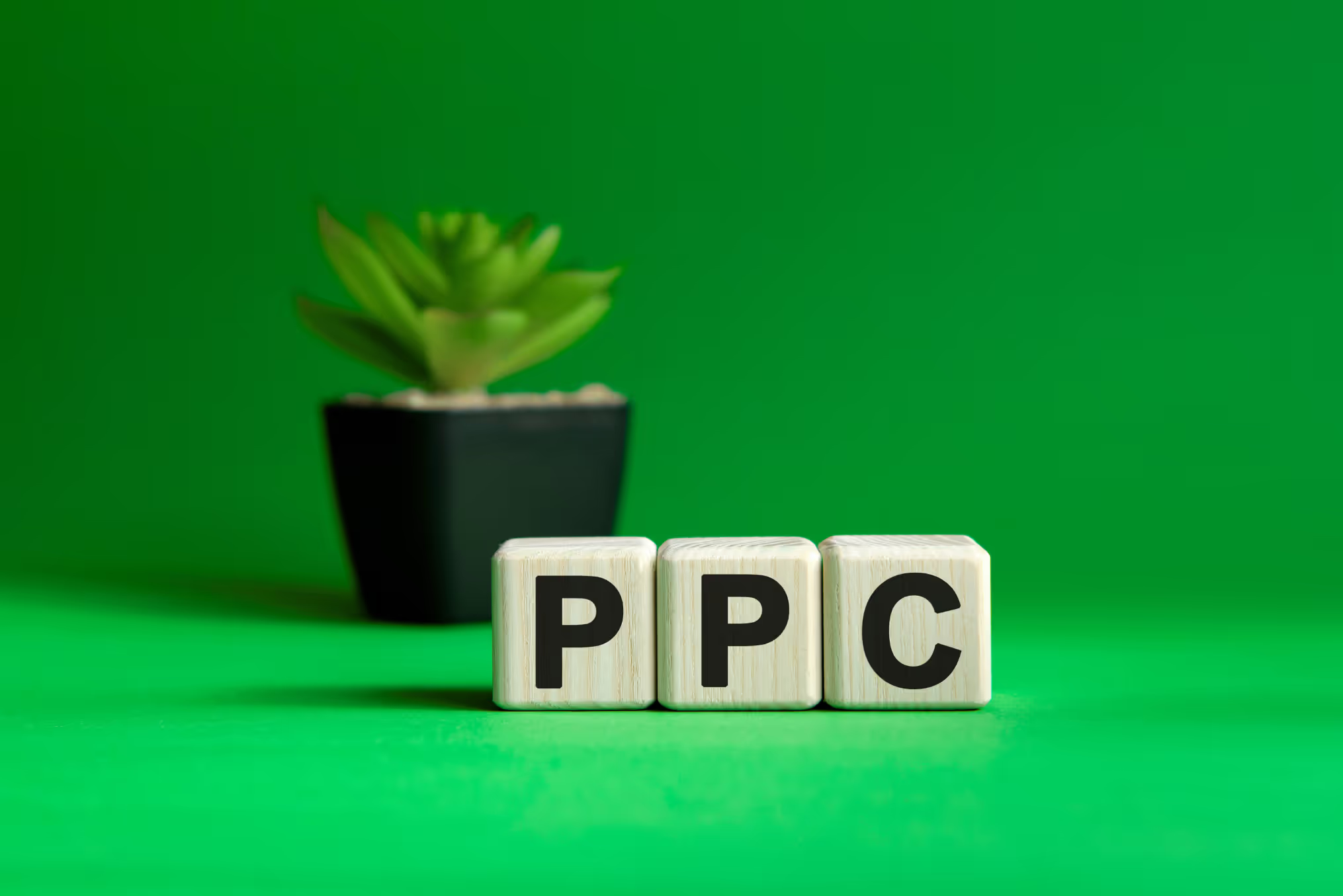PPC for Financial Advisors: A Quick Guide to Profitable Campaigns

For financial advisors, generating a consistent flow of high-quality leads is the lifeblood of the business.
While long-term strategies like SEO and content marketing are great for building a sustainable brand, they take an awful lot of time to yield results. When you need to attract new clients now, you need a more direct approach.
This is where Pay-Per-Click (PPC) advertising comes in.
PPC offers a powerful and direct path to financial advisor lead generation. It allows you to place your firm directly in front of potential clients at the exact moment they are searching for help with their pensions, investments, or retirement planning.
However, it’s not as simple as just turning on a switch. PPC can quickly become a complex and expensive exercise with little to show for it.
This guide will walk you through the fundamentals of creating profitable PPC campaigns, from initial strategy and setup to understanding a powerful alternative that removes much of the risk and effort.
What is PPC and Why Should Financial Advisors Care?
Pay-Per-Click (PPC) is a model of digital advertising where you pay a fee each time one of your ads is clicked.
The most common form of PPC is search engine advertising, where your ad can appear at the top of Google’s (or Bing’s) search results when someone types in a query relevant to your services.
Unlike SEO, which earns you a spot in the search results organically, PPC allows you to buy your way to the top. This offers three distinct advantages for financial advisor lead generation:
- Speed: While SEO can take 6-12 months to show significant results, a PPC campaign can start generating leads within days.
- Control: You have immense control over who sees your ads. You can target specific geographical locations (down to the postcode), keywords, demographics, and more. You can also turn your campaigns on and off at a moment's notice, giving you full control over your lead flow.
- Targeted Intent: You can reach people who are actively searching for a solution. Someone typing "pension advisor near me" into Google has a clear and immediate need, making them a high-quality prospect.
Before You Spend a Penny: Foundational Strategy
Jumping straight into building campaigns without a solid foundation is the number one reason they fail. Before you touch a single setting in Google Ads, you must establish your strategy.
Defining Your Ideal Client
Who are you trying to reach? The more specific you are, the more effective your targeting and messaging will be. Are you looking for:
- Business Owners aged 55+ who are planning to step back in 2-5 years?
- Engineers aged 55+ looking to retire in the next 2-5 years?
- Homeowners considering equity release?
- Individuals with multiple pensions they wish to consolidate?
Your answer to this question will dictate the keywords you target, the ad copy you write, and the content on your landing page.
Setting a Realistic Budget
Your PPC budget consists of two potential parts: your ad spend (the money paid directly to the ad platform like Google) and any management fees if you hire an agency.
It's crucial to understand that PPC is an investment. You are paying for data and market access. Start with a budget you are comfortable with and be prepared to test and learn.
As you gather data on what works, you can scale your budget to increase your lead flow.
Understanding Compliance
This is non-negotiable. Every ad you write and every landing page you create is considered a financial promotion and is subject to FCA rules. This means:
- You must not make misleading claims or "hype" up your services.
- You cannot make specific performance claims or investment projections.
- All messaging must be fair, clear, and not misleading, aligning with your firm's values and tone.
- Your compliance officer or department must have final approval over all advertising materials before they go live.
Building compliance into your process from day one will save you significant headaches later.
A Step-by-Step Guide to a Profitable PPC Campaign
Once you have your strategy, you can begin building your campaign.
Step 1: Choosing the Right Platform
While Google Ads is the most common, it's not the only option. Most search engines offer a PPC advertising experience on their platform. We’d always recommend starting with Google first.
Step 2: Mastering Keyword Research
For Google Ads, keywords are the foundation of your entire campaign. Your goal is to find the terms your ideal clients are typing into the search bar.
- Think Like a Client: Brainstorm the phrases you would use if you were looking for financial advice. Start with broad terms ("financial advisor") and get more specific ("retirement planning advice," "equity release advisor Liverpool").
- Use Keyword Tools: Use tools like SEMrush or Google Keyword Planner to find new ideas and see the estimated search volume and cost for your target keywords.
- Focus on Long-Tail Keywords: Broad keywords like "pension advice" are highly competitive and expensive. More specific, "long-tail" keywords like "pension consolidation advice for over 50s" will often have lower volume but much higher intent, leading to better quality leads.
- Don't Forget Negative Keywords: Just as important is telling Google which terms you don't want to show up for. If you don't offer free advice, you would add "free" as a negative keyword. This single step can save you a huge amount of wasted ad spend.
Step 3: Crafting Compelling, Compliant Ad Copy
Your ad is your digital billboard. It needs to grab attention and persuade the right person to click. A great ad has three components:
- A Compelling Headline: Address the user's search query or pain point directly. For example, "Need Pension Advice? | Talk To a Local Advisor Today".
- An Informative Description: Briefly explain the benefit of clicking. For example, "Get clarity on your retirement goals. We offer responsible, no-obligation advice to help you plan for the future."
- A Clear Call-to-Action (CTA): Tell the user exactly what you want them to do. "Book Your Free Consultation" or "Download Our Retirement Guide."
Remember, all copy must be compliant. Focus on being helpful, clear, and professional, not making grand promises.
Pro tip from the Intently team: This is where you have a huge opportunity to stand out. Use Google Ads Transparency Centre to see what your competitors are doing then craft ads that will jump out from amongst theirs.
Step 4: Building a High-Converting Landing Page
This is where most DIY PPC campaigns fail. Do not send ad traffic to your website's homepage.
A homepage has too many distractions. You need a dedicated landing page with a single goal: to convert the visitor into a lead.
An effective landing page for a financial advisor should:
- Have a clear headline that matches the promise of your ad.
- Be built around you as the individual advisor, not just your firm. You are selling a human relationship, so showcasing your personality and life away from work helps build trust.
- Include social proof like client testimonials and success stories to build credibility.
- Have a simple contact form asking for only the most essential information.
- Contain a single, clear call-to-action.
The landing page is a crucial part of the process, allowing you to control the messaging and capture lead information effectively.
Step 5: Setting Up Tracking and Measurement
You cannot manage what you do not measure.
Setting up conversion tracking is essential to understanding if your campaigns are profitable. Conversion tracking tells you what happens after a user clicks your ad. Did they fill out your form? Did they call you?
By tracking conversions, you can measure the most important metrics for financial advisor lead generation:
- Conversion Rate: The percentage of clicks that turn into a lead.
- Cost Per Lead (CPL): How much you are paying for each new lead. This tells you if your campaigns are truly profitable.
The Big Challenge with DIY PPC
Getting a click or even a form submission is only half the battle. This is where many financial advisors running their own PPC campaigns run into a "big black hole".
The traditional lead generation model has several problems:
- Wasted Ad Spend: You pay for every click, regardless of whether that person is a good fit, a "tyre kicker," or just curious.
- The Speed Problem: People are busy and will not wait for hours or days for you to respond. There is often too much time between the lead being generated and you finding the time to reach out, by which point the lead has gone cold.
- The Qualification Burden: You or your staff have to spend hours chasing leads, trying to qualify them, and booking them into the diary. Many advisors find themselves feeling like "glorified cold callers".
This painful, time-consuming work of qualifying and booking leads is where the real effort lies.
An Alternative Model: Intently
Recognising the challenges of traditional PPC, a different model has emerged that focuses on the final result, not just the initial click.
The Intently system was designed to solve the burning pains that financial professionals have with lead generation. It blends marketing expertise with AI to deliver qualified appointments directly to you.
Instead of paying per click and handling the follow-up yourself, this system takes over the moment a lead is generated. Here's how this alternative works:
- Targeted Ads & Landing Page: The process starts similarly, using hyper-targeted Meta ads and a personalised landing page to capture a lead's interest.
- Instant AI Engagement: This is where the model diverges. Within 15 seconds of a lead submitting their details, an AI-powered appointment setter reaches out via text message. Simultaneously, an automated email sequence is also triggered.
- Conversational Qualification: The AI then has a conversation with the lead, asking questions to figure out if they are serious and if they meet your specific qualification criteria, such as asset value. It filters out every lead that's not exactly what you're looking for.
- Automated Appointment Booking: Once the AI has qualified a prospect, it books them directly into your calendar and sends you an email with a summary of the conversation and an assessment of the lead's quality.
- Pay-Per-Appointment, Not Per-Click: With this system, you only pay for a real, qualified appointment, not for vague "leads" or clicks. This fundamentally changes the economics, removing the risk of wasted ad spend and saving you hours of follow-up time every week.
Conclusion: Take Control of Your Lead Generation
PPC advertising offers a potent and direct strategy for financial advisor lead generation. However, it's crucial to recognise that the work doesn't stop at the click. The real challenge often lies in the speed and efficiency of your follow-up and qualification process.
You have a choice: you can master the complexities of the DIY PPC model, or you can explore an alternative like the Intently system, which handles the entire process from click to qualified appointment. The right path depends on your time, resources, and business goals.
If you’re ready to build a predictable and profitable client acquisition machine, switch to Intently.
Ready to start stacking up the AUM?
Fill out the form, text with the team and book in for your 1-1 call to join our growing roster of amazing financial planners.
.avif)



.svg)